Mountain trail sign pointing to temple 21 – Taryuji 太龍寺.
Scenery and mountain trail surfaces are a little different today. Paved walking surfaces are by no means the flavor of every day on Shikoku. The mountains and forest provide some relief.
I said this in the last post:
Ohenros come to Japan and the pilgrimage path looking to be surrounded by all things green. They want green forest and mountain trails, beautiful flowers, and unaltered natural surfaces.
First Things First
Lumber yards are interesting. It is always something I notice. In this spot are very large logs waiting to be processed. There is no shortage of trees in the mountains. The woodsy smell rising from cut wood is intoxicating. It reminds me of my wood shop at home albeit on a larger scale.
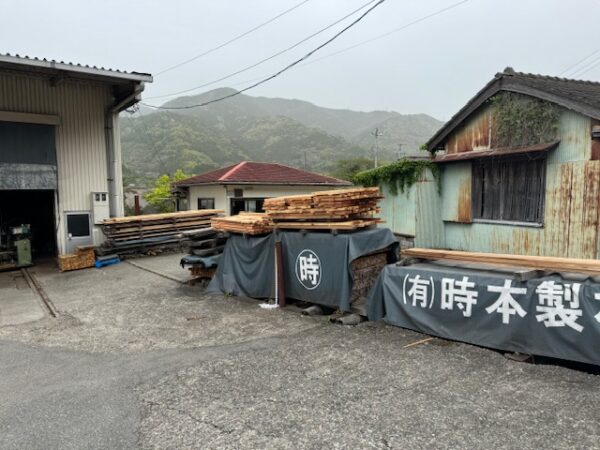
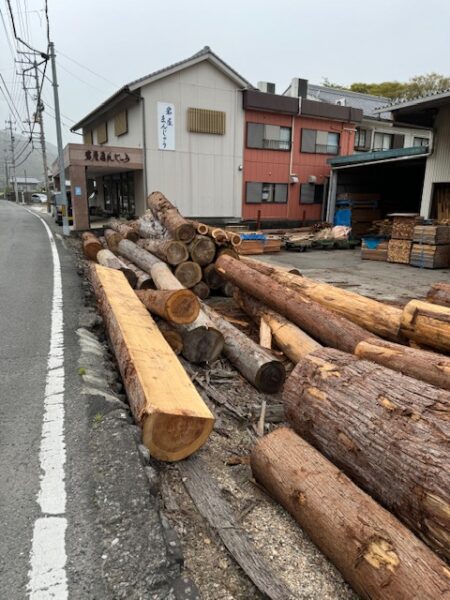
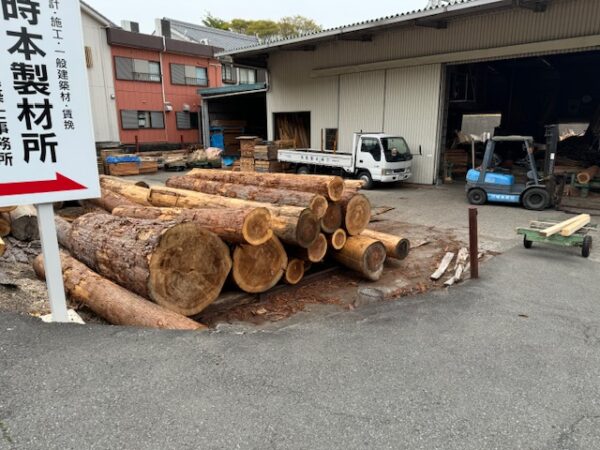
The sign on the corner of the guardrail is pointing to a mountain trail in that cluster of trees.
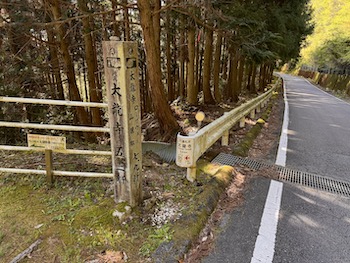
Let’s take the plunge and enter the forest.
Nature of the Mountain Trail
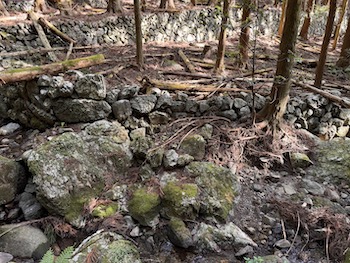
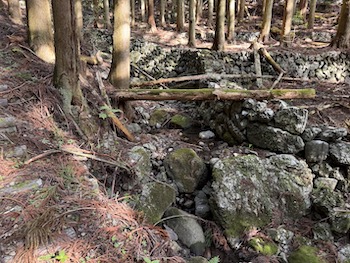
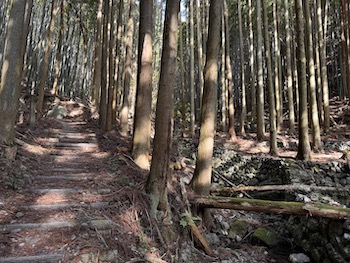
The mountain trail changes quickly. Any kind of surface condition can appear without warning. You know how I know!
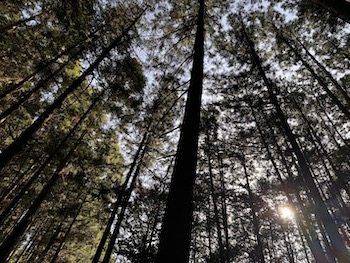
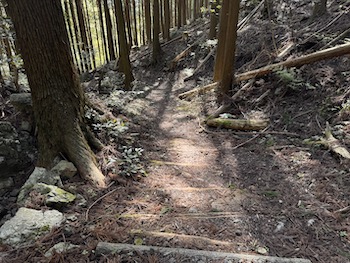
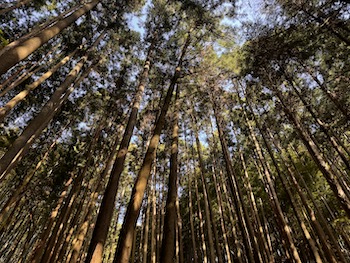
These ohenro rest huts are convenient. They seem to be spaced at regular intervals on this mountain trail.
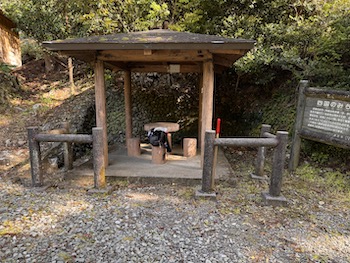
If I am not too anxious to get to a temple, I will stop every two hours and drink from my water bottle, eat a snack, take my backpack off, and rest my feet. The shade in the hut is still welcome in the forest.
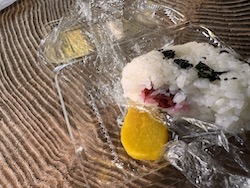
Breaks in the mountain trail run along farmland, streams and reservoirs.
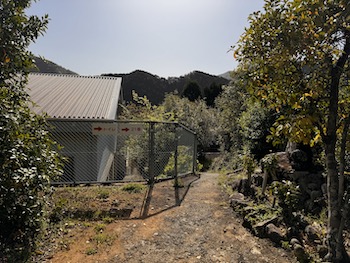
Tsunami and Earthquake Towers
Towers like this one dot the towns and countryside. They are equipped with speakers to warn of earthquakes and tsunamis. Much of the land out of the mountains is very close to sea level. It is sobering to walk by signs on poles and buildings showing just how close. Citizens – and ohenros – must be on the alert for the sirens, ready to evacuate the area and seek higher ground.
Since I am not fluid in the Japanese language, I simply stay aware of my surroundings. You know, if the alarm sounds, I’ll do what the Romans Japanese do!
Often, the loudspeakers play music or sound the time.
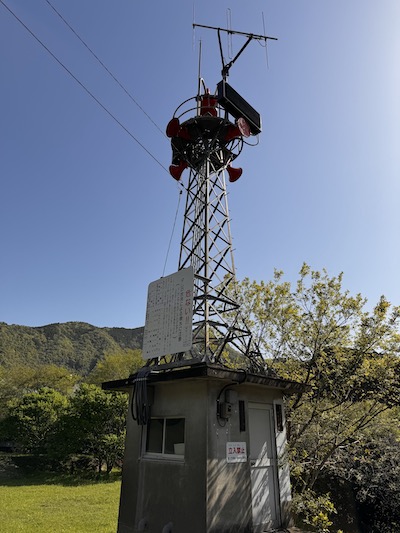
Bridges such as this one extended over small streams and rivers are also a part of the trail. However, during flooding events it may be submerged under high-flow conditions. This is by design.
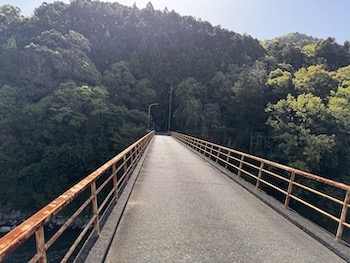
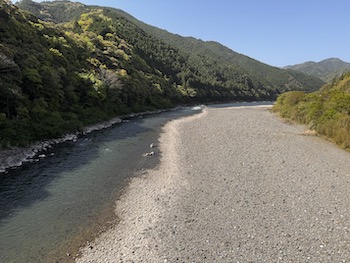
Walkers and vehicles have no safe access to the bridge until it dries or is deemed safe to cross.
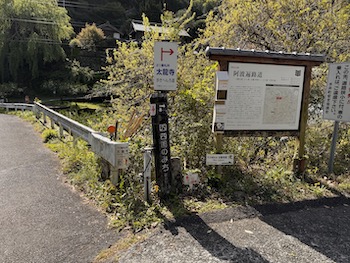
Reentry into the forest. This time it is predominately bamboo trees.
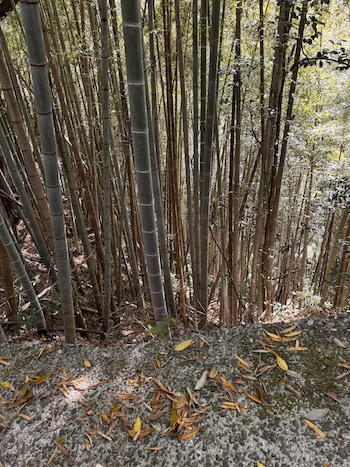
It is unbelievable that these very tall trees are bamboo!
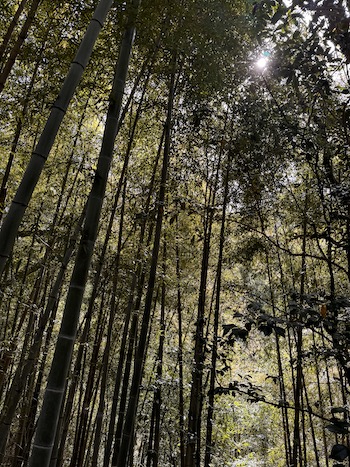
The path is quiet and washes me in solitude.
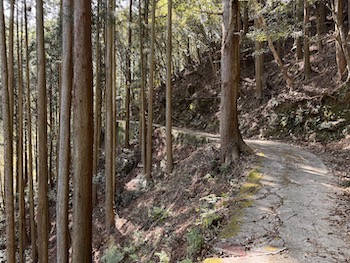
Here comes a bit of rocky terrain on the forest trail. My tendency is to tighten or tense up. However, I know that may cause me to trip or even stumble… as I have. So I try to relax my muscles and ease my mind while walking on rocks and similar terrain.
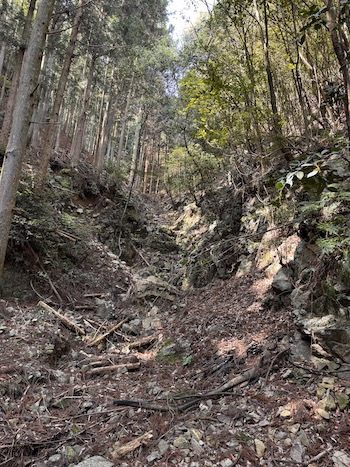
I am glad that I stopped at that ohenro hut before this.
This mountain stream is on the path.
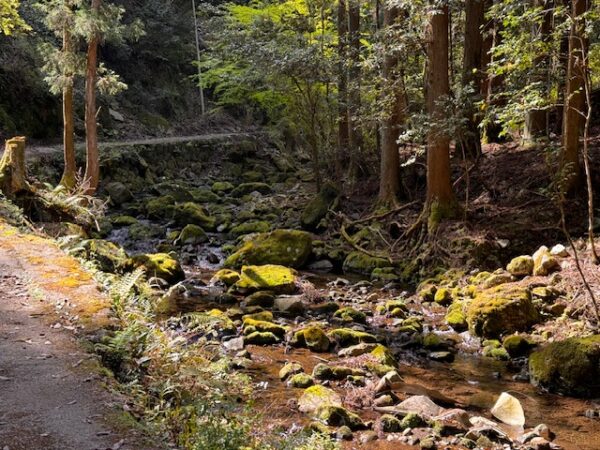
Finally, up ahead…
Temple 21 Tairyu-ji
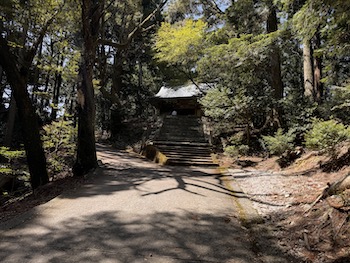
Almost there.
See you next time.
During the spring of 2024, I began a pilgrimage in Japan where I am walking 1200 kilometers or 720 miles on the Shikoku trail from Temple 1 Ryōzenji to Temple 88 Ōkuboji and beyond. Read my original announcement here.
I am excited, and I am here, still walking. And just know this, I will return to tell the tale!
Baadaye and Mata ne
Shirley J 🌸

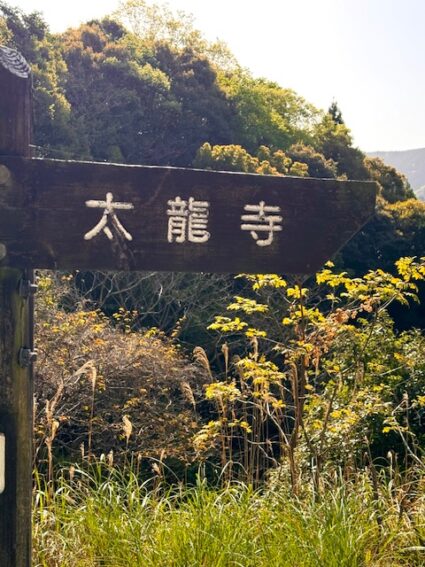
4 thoughts on “🌸 Noire Henro-san: On The Surface – Pt 2”
Thanks! I kept the initial carving simple on the staves. Just a “fishing net” pattern near the top, so if you’ve shifted your grip on the staff, you can feel that you’re almost out of staff and going to have the knob at the end in your hand very soon.
But my expectation is that as we use them more and accumulate memories, I’ll add small carvings to the staves over time. We’ll see how that goes. I’ve got two or three more coats of varnish I want to get put on this week before we take them out for a test-hike some time next week.
Sounds like you are prepping for a pilgrimage!
Are the temples spaced evenly, such that you are, when you get to the next one, a quarter of the way through?
I would have a very tough time moving on from the lumber yard. They’re usually fun places for me.
My current project in the shop is walking staves for me and my sweetie. We’ve had a few walks lately that were more like hikes than we planned, and decided staves should accompany us from here on.
The distances or stages between temples vary. Some are a kilometer or two apart. That allows a pilgrim to visit several temples in one day. Others stages are longer where the temples are 10, 20, or more kilometers apart. In that instance one temple is the goal for the day. Tokushima prefecture has 23 temples – a quarter of the way! 👣
A handmade stave is a beautiful thing. Happy crafting!
Comments are closed.